“Uncertainty is a certainty in our lives,” notes Lee Klinger Lesser, a teacher in sensory awareness who has plenty of real life experiences to base this observation on. In this moving and intriguing interview Lee shines a light on the places we have a tendency to leave in the dark.
Lee will be leading Thriving in Uncertainty: A Workshop in the Mindfulness Practice of Sensory Awareness from Sunday, July 20, through Friday, July 25, at Tassajara.
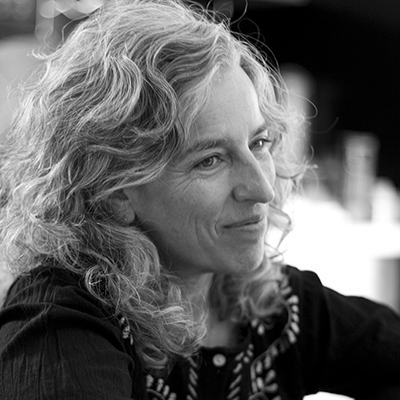
What is the mindfulness practice of sensory awareness? And, how can it benefit us?
Lee: This practice is very simple. We slow down to pay attention to our sensations. We are developing “Sensory Literacy,” so that in any moment our sensations can help to ground us and connect us to the present moment. It is very direct and immediate. It is only in the present that we can experience sensations, and when we are in touch with our sensations, we are in touch with whatever is actually happening.
Rather than trying to chase after the past or the future, or trying to avoid what we don’t like or fear, we show up for what is. This can free a lot of our energy. For me, my sensations are a compass that keep me located in the present, and whenever I get lost and caught in habits, I can pause and return to my senses.
One of my favorite poems, entitled “Lost,” speaks to this experience of returning to ourselves. The poem by David Wagonner is based on a Native American elder story.
Lost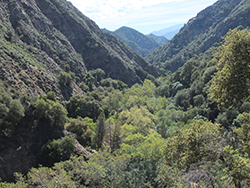 Stand still.
The trees ahead and the bushes beside you
Are not lost.
Wherever you are is called Here,
And you must treat it as a powerful stranger,
Must ask permission to know it and be known.
The forest breathes.
Listen. It answers,
I have made this place around you,
If you leave it you may come back again, saying Here.
Stand still.
The trees ahead and the bushes beside you
Are not lost.
Wherever you are is called Here,
And you must treat it as a powerful stranger,
Must ask permission to know it and be known.
The forest breathes.
Listen. It answers,
I have made this place around you,
If you leave it you may come back again, saying Here.
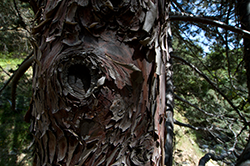
Sensory Awareness practice cultivates the connection with sensory experience so that in any moment when we are lost, we can be found by “the forest,” by breathing, by our own natural capacity to live. Even the tension and constriction in our bodies can become an ally and a support for living. They can function like a mindfulness bell inviting us to pause and pay attention. As we notice tension or constriction we can wake up to what is needed.
Instead of reacting from the tight place in me, I can pause and return to my senses. I can let breathing find me and bring me to this new here, and that will transform the quality and outcome of the conversation. When we live in connection with what each moment is asking of us, it can transform the quality of our life.
How did you come to teach on the topic of “Thriving in Uncertainty”?
Lee: Uncertainty is a certainty in our lives, so it is very helpful to be able to thrive in the midst of it. This is not how I grew up. In my home, we did our best to run away from uncertainty. My parents survived some childhood traumas using these coping mechanisms. However this approach created an atmosphere of anxiety and discomfort that permeated our home. We all used a lot of energy trying to lock up our discomfort, turn away from uncertainty and control what we could not control.
When I was 21 years old I was diagnosed with thyroid cancer and had to have my thyroid gland removed. That thrust me and my parents into the midst of uncertainty. They were terrified, but they did not want to talk about it. And yet, as they tried to hide and bury their fear, I could feel the fear pouring off of them, which made me feel terribly alone in the midst of this silence and uncertainty.
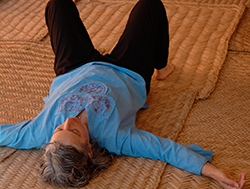
A few years after recovering from thyroid cancer, it was still impacting my life, as I was making decisions alone about follow-up and caring for myself. I realized it was important to talk to my parents about what I, and we, had been through and what I still faced. I invited my mother to stay with me in my apartment and told her how frightened I had been. Right away she began to say, “You are fine, and everything is okay.” I became livid. I said, “Stop it! I don’t want you to try to take away my pain! I just want you to feel it with me.” And she did. She began to cry. Then she held me, and we cried together. It was one of the most beautiful and moving moments of my life. Joy and pain and love all mingled together. Imagine allowing pain to open a pathway of connection, and discovering the joy and freedom that emerge from being present for what is.
This encounter with my own mortality and the fear around it ultimately led me to Zen Center and to deepen the practice of Sensory Awareness. What I have learned over and over again is that there is nowhere to run, and that when I turn towards what is happening, my heart can open and my ability to respond is deeper and more resilient.
Your workshop sounds like it will be interactive and yet a time for going inward. Could you describe some of the activities you have planned?
Lee: There is not a plan that we begin with “Exercise A” that leads to “Exercise B.” We are truly exploring and experimenting, allowing our curiosity and attentiveness to lead us. We are discovering what unfolds in the midst of very simple physical experiences. This practice is about being present with what is unfolding in the moment, and each moment is shaped by who is there and what they are discovering.
We might lift an arm and discover what changes while we are lifting our arm: Are there places where we notice tightness? Does the tension let go? Are we holding our breath? Is there extra effort? We practice trusting what is needed rather than trying to fix ourselves or force something to happen. In our daily lives, we often try so hard to force change, and it doesn’t work. There is no right experience. The practice is being present for what is happening, and that is different for each person.
Being in a Sensory Awareness workshop creates a non-threatening, simplified laboratory of our lives. The patterns and experiences we discover can open insight and new possibilities for the rest of our lives. That is what happened for me in the very first workshop I took with Charlotte Selver, a German educator who introduced Sensory Awareness to the US.
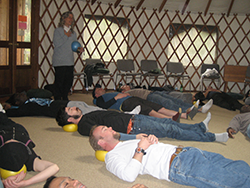
One day, Charlotte asked us to work with partners and to hold the foot of a partner. This struck me as very weird. I was not very comfortable in my own body, and I had no interest in touching someone else’s body, especially some stranger’s foot. But I looked around and saw everyone doing it. And I thought, well, I am here, so I might as well do it. I found a partner and resigned myself to this bizarre experience.
Right away a familiar pattern of thought began: Well, if I am going to do this strange thing, I am not just going to do it. I am going to do a really good job of it. I am going to be “Miss Super-Duper foot holder.” Familiar refrains circled through my thoughts: Don’t worry. I am here. I’ve got your foot. I am going to do a really good job. I really have your foot. You can rely on me. This internal conversation continued until Charlotte quietly asked, “Are you doing anything extra?” I paused and felt what was happening. I was surprised to discover that my shoulder was almost touching my ear. It was lifted up and straining. As I noticed it, it let go. Then, I felt all the extra effort I was using through the full length of my arm, which also let go as I noticed it.
Finally, I discovered that my hand was squeezing my poor partner’s foot. I had been so consumed with the idea of doing a good job and being reliable that I was not in any real connection with this other human being nor with myself. As I gave up the extra effort, for the very first time I felt the person I was with. I felt pulsations in her foot. I felt the temperature of her foot. I felt the alive human being that I was actually touching and meeting. I felt a simple and intimate connection that was beyond my own doing and effort.
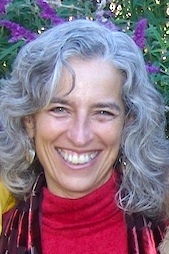 The question Are you doing anything extra? has been a koan and ongoing theme for me for the last forty-three years. Whenever I ask it, I often find that I’m doing something extra. I am now more familiar with the difference between doing something extra and allowing the experience. Changes happen more quickly when I notice my extra effort and am able to let it go.
The question Are you doing anything extra? has been a koan and ongoing theme for me for the last forty-three years. Whenever I ask it, I often find that I’m doing something extra. I am now more familiar with the difference between doing something extra and allowing the experience. Changes happen more quickly when I notice my extra effort and am able to let it go.
Of course, many activities in our lives demand a lot of energy and are quite strenuous. The question is: Are we in touch with what we are doing and doing what is actually needed? Or, are we isolated and distracted by our own familiar thought patterns or images of how we want to be? Are we acting in habitual, constricted or limiting ways? These simple discoveries can have a profound impact on how we live.
Lee Klinger Lesser will lead Thriving in Uncertainty: A Workshop in the Mindfulness Practice of Sensory Awareness from Sunday, July 20, through Friday, July 25, at Tassajara. You can find more about Lee and her work with sensory awareness at www.returntooursenses.com In 2008 Lee co-founded Honoring the Path of the Warrior, to share the practice of Sensory Awareness with returning veterans: www.honoringthepath.org











